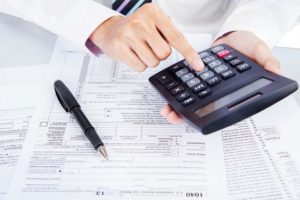 No one enjoys dealing with the IRS tax collection process, so few people are well-versed in tax collection terminology. But when you find yourself entangled in unpaid tax debts, you need to understand what all the various terms mean and how they affect you. To help you navigate your own debt challenges, here is a short guide to six key terms you’ll encounter along the way.
No one enjoys dealing with the IRS tax collection process, so few people are well-versed in tax collection terminology. But when you find yourself entangled in unpaid tax debts, you need to understand what all the various terms mean and how they affect you. To help you navigate your own debt challenges, here is a short guide to six key terms you’ll encounter along the way.
1. CP14 Notice
The IRS has a wide variety of form notices and letters to convey different messages to taxpayers. One important notice for collections purposes is known as CP14.
This numbered notice tells the taxpayer the exact balance due for a specific tax and year, along with penalties and deadlines for payment. If a debtor plans to include a tax debt in bankruptcy discharge, they generally must have received such a notice making the tax bill an assessed, legal obligation.
2. Garnishment
A garnishment is an instrument by which a creditor can go to court to get legal permission to seize a debtor’s money or income. Garnishments can be obtained by private creditors through a court order or judgment. The IRS, though, has a different path and can skip the court judgment.
An IRS garnishment is known as a levy and has a unique set of rules as to how much of a person’s income can legally be seized. Limits on tax garnishments are often higher than those on civil garnishments, so a taxpayer should work to avoid reaching this step.
3. Non-Collectable Status
When a taxpayer account is deemed non-collectable, further collections efforts are generally halted because the taxpayer simply cannot possibly afford to pay their debt at this time. A non-collectable status can be a big help for insolvent taxpayers, but it’s not a permanent solution. If the IRS deems that a debtor’s financial situation has changed, the debt can be put back into collections.
4. Refund Offset
Any taxpayer that owes money for certain types of debts may see their income tax refund seized to pay these. This is known as an offset, and it may be used to pay things like federal or state tax debts that have passed their payment deadlines, past-due child support, debts to other federal agencies, unemployment benefits debt, or some educational debt.
If your refund was used for this purpose, you will receive a notice after the fact. Notice CP49, for instance, alerts the taxpayer that the refund was applied to a different tax year’s debt. While most offsets cannot be undone, taxpayers may have recourse if they meet the criteria for injured spouse relief.
5. Tax Levy
A tax levy is the second part of a two-part process to seize a taxpayer’s assets to pay a tax debt. The IRS (or state agency) issues a notice of their intent to issue a levy and then has the authority to carry out the seizure. A levy could be placed against a hard asset, such as a home or vehicle, or it could be placed against a bank account or some sources of income.
6. Tax Lien
A lien is the first part of the seizure process. This notice puts a claim against certain specific assets that could in the future be seized to pay a tax obligation. A lien does not actually authorize the seizure but rather notifies the owner and any future buyers that there is a claim against the item. A lien against anything with a title may prevent its sale, and liens may not be easily removed even during bankruptcy.
The more you know about the sometimes complicated process of collecting tax debts, the better you can protect your money and yourself. Want to know more about a notice you’ve received or a debt you owe? Start by consulting with the experienced attorneys at Wiesner & Frackowiak, LC, today.
